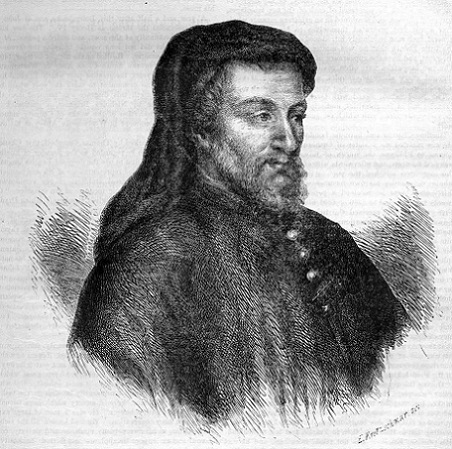| If you read about the life of the 3rd-century Christian martyr Saint Valentine of Rome, you might be confused about why his feast day has become a day to celebrate romantic love. Though legend has it that he was martyred, in part, for marrying Christian couples who were persecuted under the Roman emperor Claudius, no known reference to Valentine’s Day as a day for lovers exists until Geoffrey Chaucer’s late 14th century poem “The Parliament of Fowls.” In the poem, Chaucer’s narrator describes how several species of birds are called together on Valentine’s Day by the goddess Nature to choose their mates for the year. The full text of the poem (which is, of course, in Middle English) is available here, but we have excerpted a key section of the poem below. Some of you might also be interested in A.S. Kline’s modern English translation, which can be found here. Whan I was come ayen unto the place That I of spak, that was so swote and grene, Forth welk I tho, my-selven to solace. Tho was I war wher that ther sat a quene That, as of light the somer-sonne shene Passeth the sterre, right so over mesure She fairer was than any creature. And in a launde, upon an hille of floures, Was set this noble goddesse Nature; Of braunches were hir halles and hir boures, Y-wrought after hir craft and hir mesure; Ne ther nas foul that cometh of engendrure, That they ne were prest in hir presence, To take hir doom and yeve hir audience. For this was on Seynt Valentynes day, Whan every foul cometh ther to chese his make, Of every kinde, that men thynke may; And that so huge a noyse gan they make, That erthe and see, and tree, and every lake So ful was, that unnethe was ther space For me to stonde, so ful was al the place. And right as Aleyn, in the Pleynt of Kynde, Devyseth Nature of aray and face, In swich array men mighten hir ther finde. This noble emperesse, ful of grace, Bad every foul to take his owne place, As they were wont alwey fro yeer to yere, Seynt Valentynes day, to stonden there. That is to sey, the foules of ravyne Were hyest set; and than the foules smale That eten as hem nature wolde enclyne, As worm or thing of whiche I telle no tale; And water-foul sat loweste in the dale; But foul that liveth by seed sat on the grene, And that so fele, that wonder was to sene. There mighte men the royal egle finde, That with his sharpe look perceth the sonne; And other egles of a lower kinde, Of which that clerkes wel devysen conne. Ther was the tyraunt with his fethres donne And greye, I mene the goshauk, that doth pyne To briddes for his outrageous ravyne. The gentil faucoun, that with his feet distreyneth The kinges hond; the hardy sperhauk eke, The quayles foo; the merlion that payneth Him-self ful ofte, the larke for to seke; Ther was the douve, with hir eyen meke; The jalous swan, ayens his deeth that singeth; The oule eek,that of deeth the bode bringeth; The crane the geaunt, with his trompes soune; The theef, the chogh; and eek the jangling pye; The scorning jay; the eles foo, heroune; The false lapwing, ful of trecherye; The stare, that the counseyl can biwrey; The tame ruddok; and the coward kyte; The cok, that orloge is of thorpes lyte; The sparow, Venus sone; the nightingale, That clepeth forth the fresshe leves newe; The swalow, mordrer of the flyes smale That maken hony of floures fresshe of hewe; The wedded turtel, with hir herte trew; The pecok, with his aungels fethres brighte; The fesaunt, scorner of the cok by nighte; The waker goos; the cukkow ever unkinde; The popiniay, ful of delicasye; The drake, stroyer of his owne kinde; The stork, the wreker of avoutrye; The hote cormeraunt of glotonye; The raven wys, the crow with vois of care; The throstel olde; the frosty feldefare. What shulde I seyn? Of foules every kinde That in this world han fethres and stature, Men mighten in that place assembled finde Before the noble goddesse Nature, And ech of hem did his besy cure Benignely to chese or for to take, By hir acord, his formel or his make. |
online pharmacy purchase amaryl online with best prices today in the USA
online pharmacy buspar online with best prices today in the USA
online pharmacy premarin buy with best prices today in the USA



No Comments